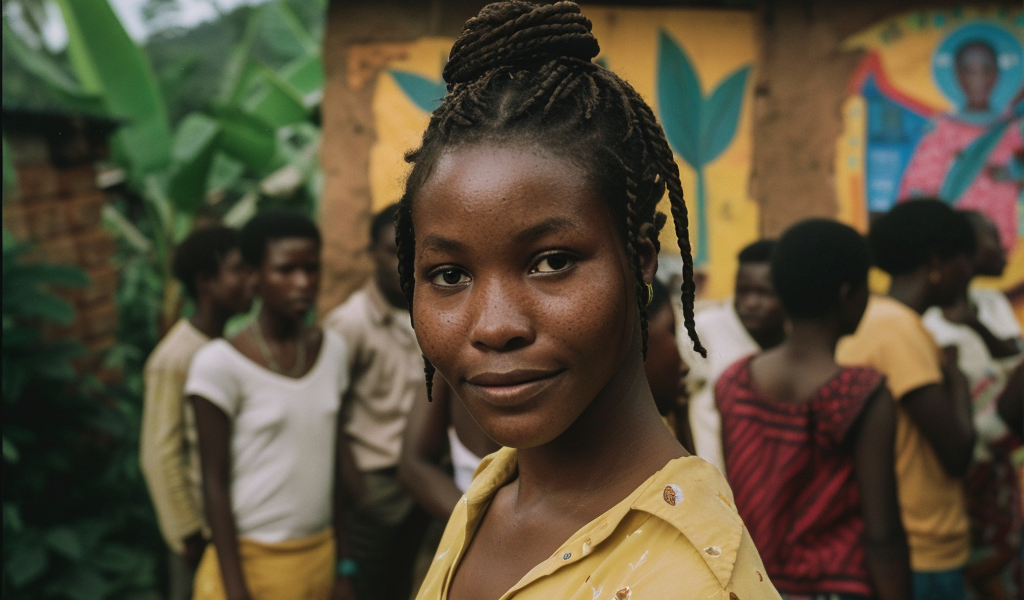HIV continues to pose a significant public health challenge in sub-Saharan Africa, particularly impacting girls and young women. As discussions at the United Nations increasingly focus on climate change and global conflicts, the urgency to address the HIV epidemic cannot be overlooked. UNAIDS, the leading UN agency dedicated to combating HIV/AIDS, emphasizes the need for renewed efforts and resources to tackle this ongoing crisis.
In the heart of the Central African Republic, a young woman named Gniwali Ndangou shares her story of resilience and hope. Orphaned at a young age, Gniwali was the only sibling required to take medication daily throughout her childhood. Her guardian misled her into believing that the pills were for malaria and headaches. It wasn’t until she was 17 years old, during a moment of frustration over her medication regimen, that her sister revealed the truth: Gniwali was born with HIV.
Today, Gniwali serves as a peer educator and community health worker at the Centre d’information et d’éducation sexuelle des jeunes (CISJEU), a center dedicated to sexual education for young people. The center provides essential services, including HIV testing and prevention education, all run by members of the local community. Through peer support, teenagers and young adults living with HIV are encouraged to adhere to their treatment regimens, minimizing the risk of transmission. Gniwali credits the center with saving her life and views it as a beacon of hope for many young individuals facing similar challenges.
UNAIDS reports that in sub-Saharan Africa, approximately 3,100 teenage girls and young women are newly infected with HIV each week. Alarmingly, these young women are three times more likely to contract the virus compared to their male counterparts. The statistics reveal a pressing need for targeted interventions aimed at this vulnerable demographic.
The United Nations has set ambitious goals through the Sustainable Development Goals (SDGs) to eliminate AIDS as a public health threat by 2030. However, with the current rate of infection in various regions, UNAIDS is sounding the alarm for increased medical and financial support to meet these objectives.
In eastern and southern Africa, the disparity in infection rates is stark. Among 15 to 19-year-old girls, the infection rate is nearly six times higher than that of boys in the same age group. Furthermore, women aged 20 to 24 are more than twice as likely to be infected with HIV compared to men of the same age. A staggering 86% of children born with HIV reside in Africa, underscoring the urgent need for comprehensive health policies that prioritize the needs of girls and young women.
Suki Beavers, Director of Equality and Rights for all at UNAIDS, highlights the critical factors contributing to these alarming statistics. In an interview, she identifies discrimination, gender inequality, violence, and poverty as significant barriers that increase the vulnerability of girls and young women to HIV infection. To effectively combat the virus, it is essential to address these underlying issues and ensure that those affected receive the support they need.
Education plays a crucial role in prevention efforts. By providing accurate information about HIV transmission and prevention, young people can make informed choices about their health. Peer-led initiatives, like the one Gniwali participates in, are instrumental in fostering a supportive environment where young individuals can discuss their experiences and challenges openly.
Furthermore, the need for accessible healthcare services cannot be overstated. Many young women in sub-Saharan Africa face significant barriers to accessing HIV testing and treatment, often due to stigma and discrimination. Community-based centers like CISJEU are vital in bridging this gap, offering services that are tailored to the specific needs of young people.
UNAIDS is calling for a multi-faceted approach to combat HIV, which includes enhancing healthcare infrastructure, increasing funding for prevention and treatment programs, and fostering gender equality. Engaging communities in the fight against HIV is essential for creating sustainable change and reducing the stigma surrounding the virus.
As the global community grapples with pressing issues such as climate change and geopolitical conflicts, it is imperative that the fight against HIV remains a priority on the international agenda. The health and futures of millions of young women depend on it.
In conclusion, the stories of individuals like Gniwali serve as powerful reminders of the resilience of those living with HIV and the importance of community support in navigating the challenges posed by the virus. By prioritizing the health and rights of girls and young women, we can work towards a future where HIV is no longer a threat to public health.





